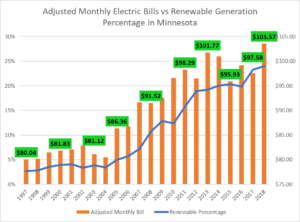In the same way as other products, the business sectors for Power to Choose Houston , petroleum gas, oil, and renewable energy are mind-boggling – and continually evolving. Indeed, most energy costs change hourly.

Basic monetary factors – like the organic market – are generally unsurprising, yet when you include political and administrative factors along with everything else, just as a monetary hypothesis, anticipating the energy price becomes very challenging. As one of the quickest developing energy counselling firms in the nation and the head energy acquisition expert in the Mid-Atlantic district, we track the business sectors day by day, dissecting patterns and utilizing that data to help our customers.
Here are the main ten factors that can impact the cost of energy:
Supply. Energy from atomic, coal, gas, oil and renewable sources responds rapidly in light of the accessible stock (or scarcity in that department). This is a vital contributing component to value variances, which can happen on an hourly premise.
Demand. Interest for warming, cooling, light, and cycles shifts because of interest as far as monetary, innovative, and productivity measures.
Gas Storage. This is a term for energy “stock” (since you can’t store power), for example, the distinction among market interest. Gas infusions and withdrawals are reported week by week, and costs change appropriately.
Climate Forecasts. The anticipated climate estimate, just as real climate occasions, are significant contemplations, influencing spot market costs and transient agreements. Regardless of whether the figure becomes the truth is less basic to longer-term costs.
Age Changes. While more limited, these progressions can broadly affect the business sectors.
Atomic. Retirement of more seasoned plants as they require re-authorizing can cause vacillations.
Coal. Coal plant changes to petroleum gas to abstain from scouring innovation expenses can likewise cause variances
Transport. Across the U.S. there are extreme requirements in gas pipeline and electrical bandwidth, which set aside time and venture to turn around. With the trouble of transportation, costs rise.
Worldwide Markets. Despite the enormous development in shale gas creation, significant changes in worldwide oil supplies can influence U.S. homegrown energy costs.
Imports and Exports. Worldwide oil and gas costs decide relative benefits providers can make selling fills locally or abroad. All energy costs are associated to some degree.
Unofficial law. Government (FERC) and state (PUCs) guidelines can change both market interest costs rapidly and essentially, which, as indicated above, influences the expense of energy.
Monetary Speculation. Like most other exchanged wares, energy costs can be influenced altogether by monetary theory, which is the most un-straightforward factor of all. The reason for a market not following the course demonstrated by supply or demand factors is typically monetary theory, which is generally undetectable and leads to unforeseen outcomes.
Type of Consumer: As a matter of fact, mechanical clients pay less per kilowatt-hour (kWh) than business or private clients. This is because they can be provided with a bigger measure of power at one at once, and age speedier and less expensive. On the other hand, getting influence from customers who utilize more modest sums requires more exertion, time, and at last, cash. Consider purchasing in mass for discount evaluating as opposed to getting a little at a time.
Yet, keeping your energy costs as low as possible requires you to make informed decisions regarding the direction of the market over the next few years, both with expert help and on your own.
